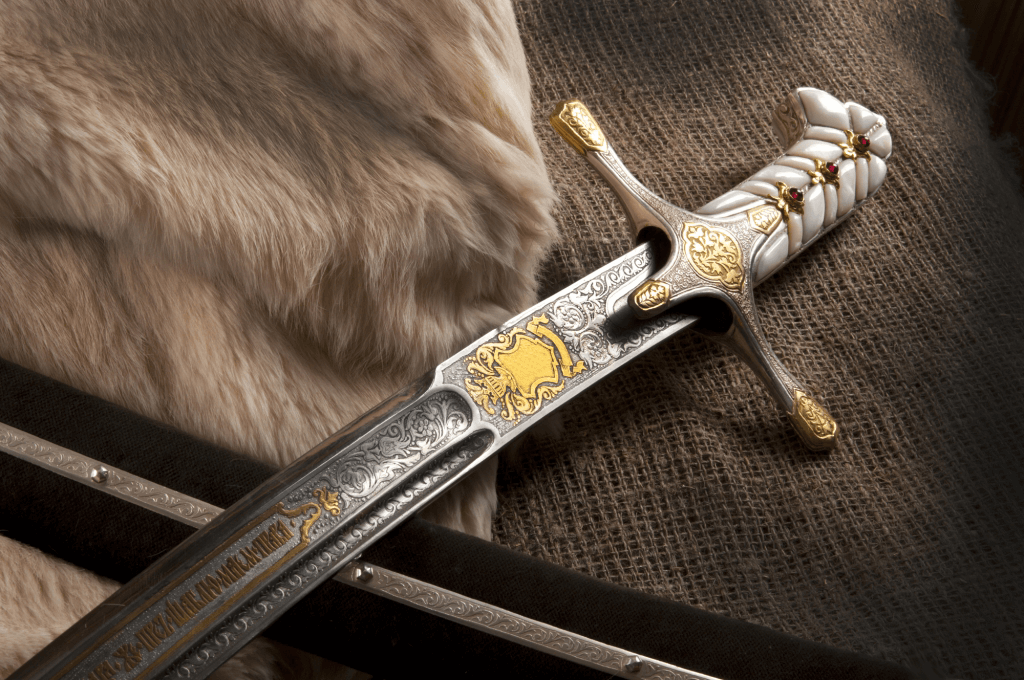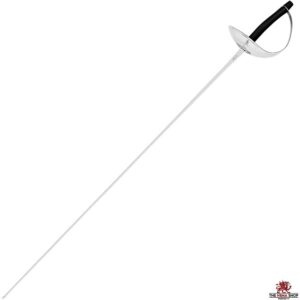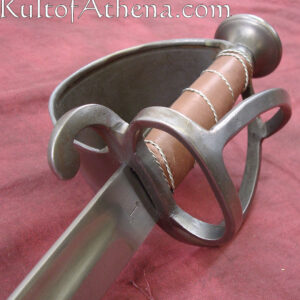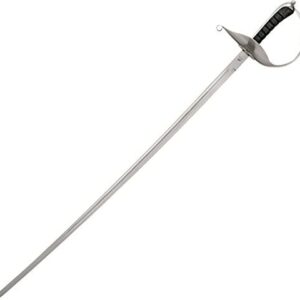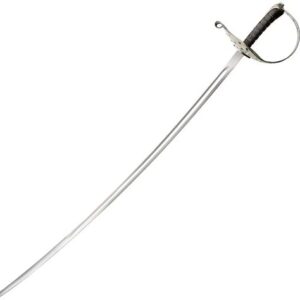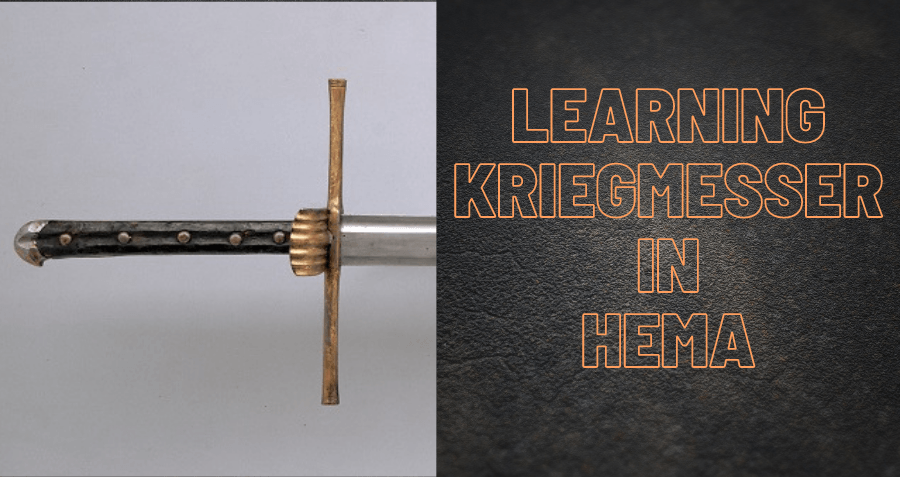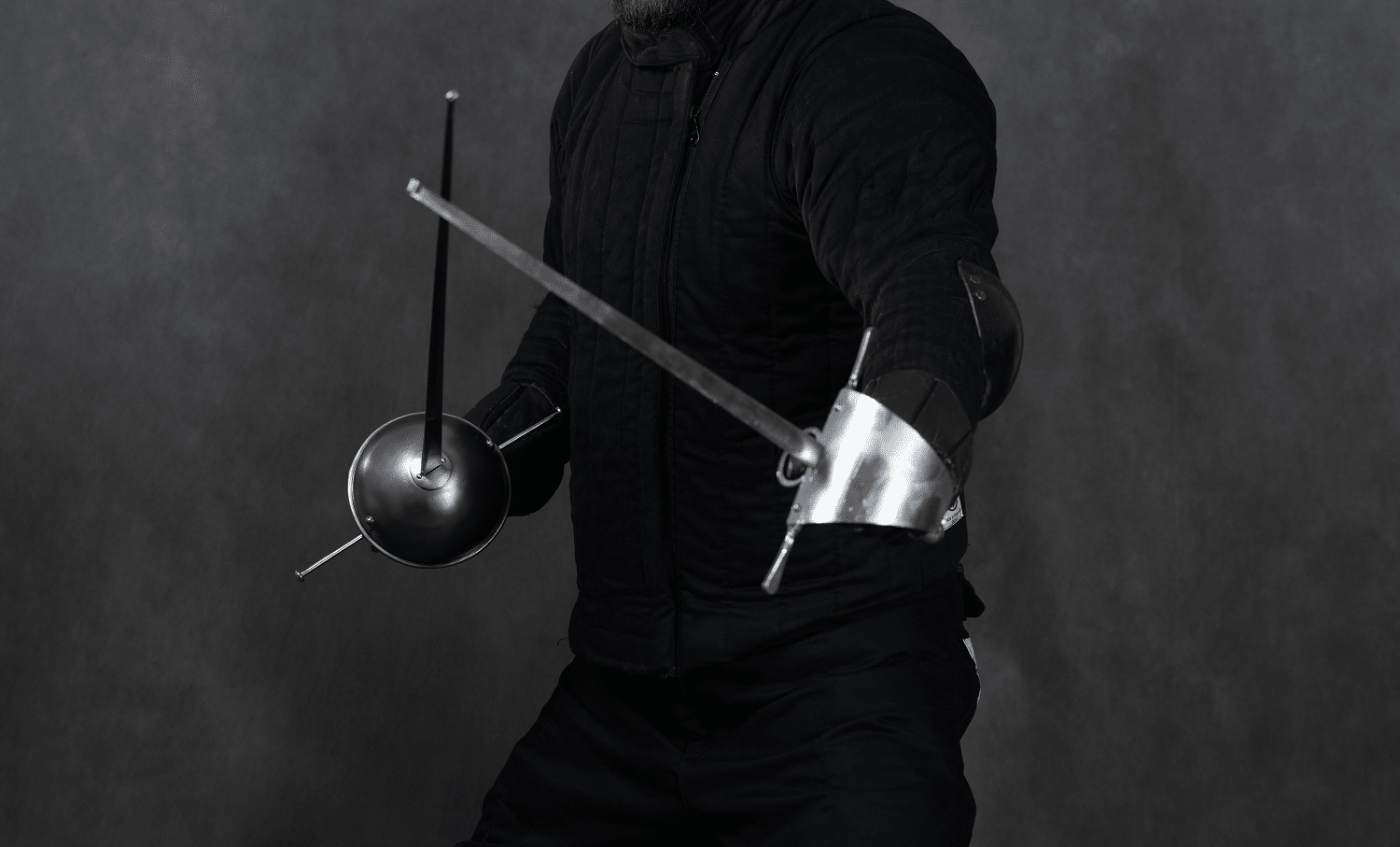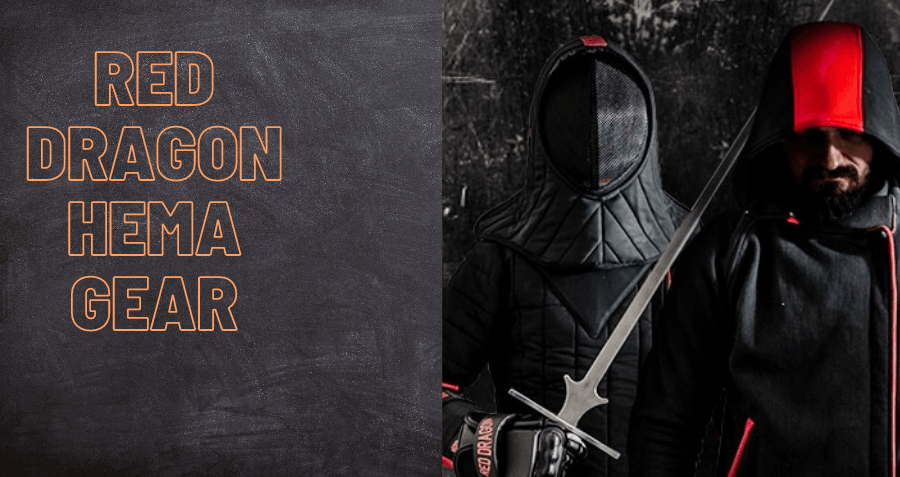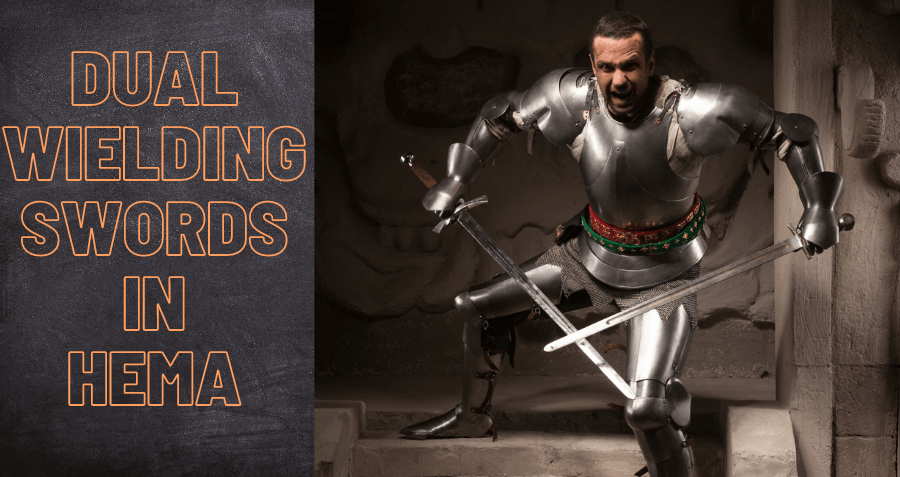A military saber (also spelled as sabre in British English) is a type of single edged, curved blade with a one-handed grip. The blade is characterized as a backsword, because of the triangular cross section giving it a flat edge opposite of its sharp side. The military saber sword is typically affiliated with the light cavalry units of military forces. Heavier mounted units and infantry men have also used single edged blades, but theirs were often times straighter and had varying weights depending on if they were using mounted attacks or were on the ground. This kind of saber sword, while it could be occasionally used for thrusting, is primarily a slashing weapon. When a blade is curved, it allows for the force of the attack to be concentrated at the point of percussion, or the point of impact. The curve of the blade also ensures the sword will slice along the skin accordingly.
We discuss the various books and historical treatises that are used to teach and learn how to fight with military saber swords in our Path of the Sabre page section of this Historical European Martial Arts Resources website.
History of the Military Saber Sword
The single edged sword is believed to have first originated in ancient China where it was the first time such a blade was documented to have been used in combat. The curved variety of the sword first appeared in southern Siberia in the 6th century and was kept to eastern Europe and Asia until the 17th and 18th centuries. At this time Hungarian mounted military units were often being hired around western Europe as a mounted fighting force for various countries. These mounted units settled in western Europe and brought with them the curved sword design, which the Polish called a szable and is the origin of the word sabre / saber.
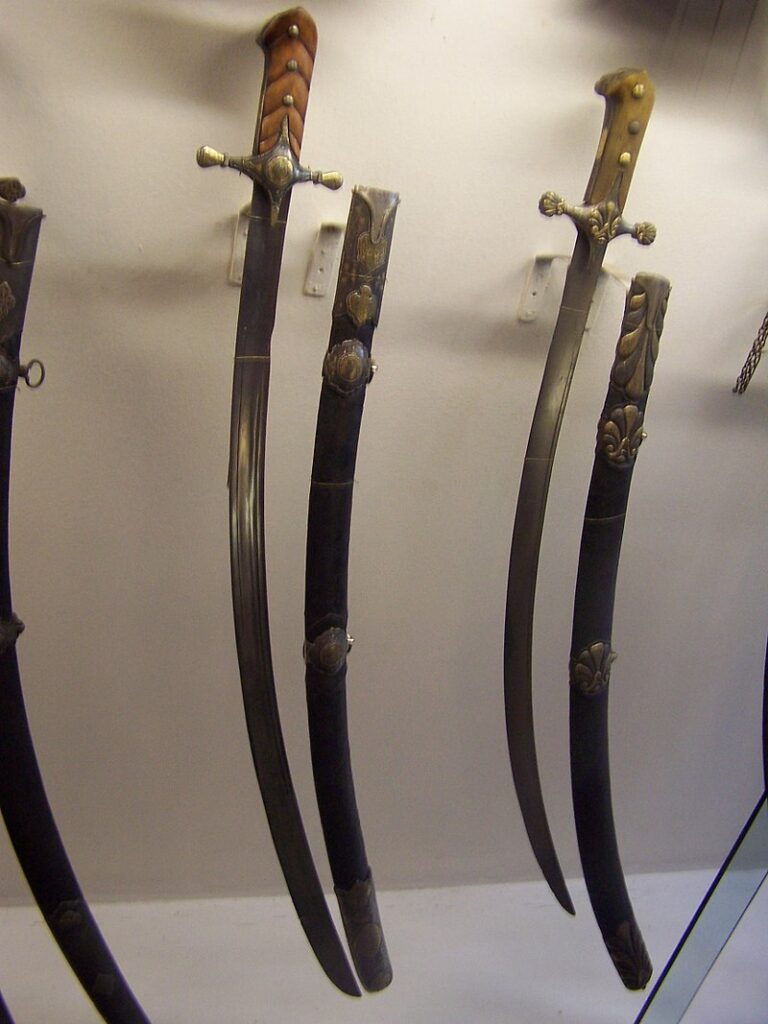
These curved saber swords then saw widespread military use by the 19th century and continued to be used as a standard weapon of mounted military units up until World War 1. Even in modern day militaries today the military saber sword is still widely worn as a decorative dress sword with uniforms in militaries around the world.
The saber sword was regularly used by the British in the Napoleonic era. By this time, most of Europe had adopted some form of the curved sword for their military. More often than not, it was typically used in battle by both light and heavy mounted military units. Napoleon himself liked using this style of the sword in the heavy mounted charges that won him many a battle throughout the napoleon war. Four different saber swords were used by the British during the Napoleonic era – one for a light mounted military unit, one for a heavy mounted military unit, and two different models for infantry men.
The Pattern 1796 Light Cavalry Sabre was used extensively in the Napoleonic war. This proved to be the most lethal of saber swords of the time. Because of its value as a weapon it was regularly copied and produced under different names until the 20th century. This popular military saber sword was designed by John Gaspard Le Marchant, a mounted military unit general, and Henry Osburn, a Birmingham swordmaker and cutler to King George. During the French Revolution, John Le Marchant noticed how clumsy and heavy the swords were that were being used for mounted military attacks. He took to the task of designing a curved blade he had encountered during his travels, primarily based on several Austrian designs. This saber sword became unlike any other of the time period as he designed the blade to be wider near the point. This design changed the balance of the saber sword, making downward slashes all the more powerful by focusing the entirety of the soldier’s arm strength into the final six inches of the blade.

John Le Marchant originally intended his light saber sword design to be used across all mounted military units of the empire, but this idea was quickly denied by the board of general officers. Instead, they decided that the heavy mounted military units would have a straight sword for use in combat. The 1769 Austrian Dragoon saber sword (which imitated the Austrian basket-hilted sword pallash design) was then adopted. The design was further refined into the Pattern 1796 Heavy Cavalry sword. These were straight bladed saber swords with a hatchet point tip and a disc guarded hilt. The broad, heavy blade made delicate swordsmanship impossible, but that fit with the fighting style of the heavy mounted soldiers that wielded it. The soldiers in these units had a less refined approach to combat, instead preferring to bludgeon their opponents with their blade and use their sword guards as knuckle dusters. This technique worked far better with the heavy sword design than any previous blades that were available.

The infantry officers did not fare as well as their mounted counterparts for their combat sword. The 1796 Pattern Infantry Officer sword was used by officers from 1796 until it was finally taken out of circulation in 1822. It was one of the two most common infantry officer swords used during the war with napoleon. The sword was not well liked by the officers who used it, as it had the reputation of being a very weak fighting blade. Many even joked that its only real use was that of fanciful decoration. The blade was weak and narrow in a straight edged style that preformed poorly in both slashing and thrusting. While the brass guard provided very little protection for the hand since half of the guard was designed to fold in order to fit snugly against a uniform. This adjustment compromised its strength and usefulness. Because of these defects, and the over all sentiment of the sword, many officers sought out a replacement blade or simply used dirk, or small dagger, while in battle.
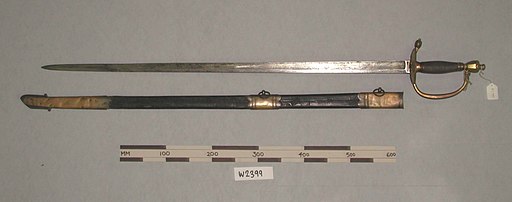
British Pattern 1796 Infantry Officers sword and scabbard sword with leather scabbard; blade- line engraved back Woollcup 23 Dea Kune; black leather scabbard with brass fittings, (source)
Many officers that sought a replacement saber blade for the unreliable 1796 infantry blade, found this replacement in the Pattern 1803 Infantry Officer saber sword. This saber sword had a wider blade that was double edged for the last seven inches, ensuring a lethal stab was achieved. The blade also brought back the curved style of previous swords and allowed the infantry man to use it to make accurate and deadly slashes. The crowned guard of the sword provided those using it with a great deal of more protection and it could also double as a knuckle duster. The highly effective sword gave even the highest ranking officers the courage to charge into battle, a thing very few of them did before. It even came so far as to become a symbol of the fighting officers themselves. The 1803 sword served many years as the blade of choice for infantry officers. The design of the blade continued to stay in rotation until its eventual retirement in 1921.
In combat the curved saber swords continued to be used for many years, in many different countries, and in many different styles. The elegant ruthlessness of the blade generally won the favor of many who used it, even if they did not have the brutal power of larger sword blades.
Extensive debates are still waged over the overall effectiveness of the curved saber sword in battle, and some believe that the original curved swords were designed not with combat in mind but for aesthetic looks on the battlefield. Yet it is clear that as a military focused arm the improvements to the designs of saber swords were performed over time with many balance changes, hilt designs, and blade tweaks designed to improve the usefulness of such a blade in battle. It is easy to see why such a saber sword style still has a place in many militaries around the world, both for symbolism and legacy, as well as for fashionably decoration.
Today the use of military saber swords is still alive and practiced at many HEMA (Historical European martial arts) clubs. Specialty fencing sabers exist that emulate the properties of real sharp sabers and are used with protective gear to reconstruct the martial traditions of using a military saber sword.
As mentioned at the beginning of this article our Path of the Saber section includes a list of many different historical sources of information on how to fight with a military saber sword. Please read that section for information about these saber fencing books and martial art training manuals.
****
If you’d like to learn more information about historical fencing practices please check out our Learn HEMA page for a guide to learning about the historical weapon that interests you. You can also find more guides we’ve written about other topics at our Helpful Guides page. You can also join our community at our forums.
